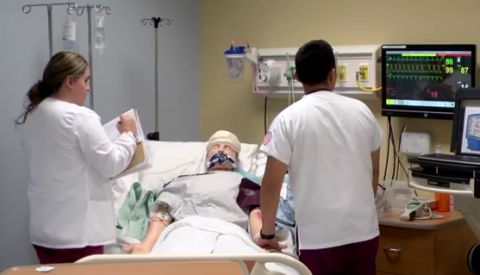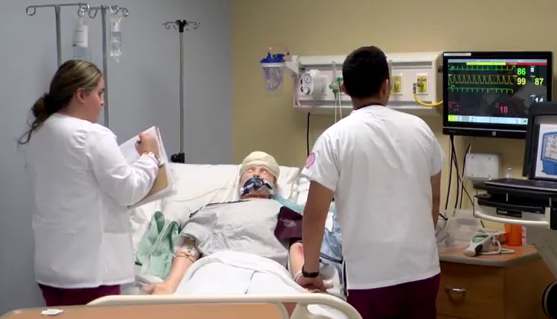Kenosha---If all goes as planned, a wing at Gateway Technical College will soon look more like a floor in a hospital than in a college.
This summer Gateway will move the nursing program that's currently housed in the Academic building on campus into the 1st floor of the Bioscience building. A patient simulation center will be created, complete with realistic-looking patient rooms, life-like mannequins and de-briefing rooms. Although the program is already using them, additional patient simulators will be purchased, some of which will be able to be taken on the road to remote settings like fire departments for in-service training led by Gateway instructors.
"Our students have so many opportunities to actively be thinking like nurses in the classroom before they go with instructors to a clinical site," said Anne Wilkinson, Interim Dean of Nursing. "It's amazing."
Wilkinson, nursing instructor Vicki Hulback and College President Bryan Albrecht spoke on a recent edition of Greg Berg's Morning Show.
The robotic mannequins appear to breathe, have pulses and even make lung and bowel sounds. Various scenarios can be programmed into them by instructors and technicians at computer consoles sitting behind one-way mirrors just outside of 'patient' rooms. The mannequins even blink and can 'talk' to students by way of the hidden 'wizards' who control and monitor the robots' responses.
A 'star' robot is named 'Lucy.' She teaches obstetrical lessons by simulating various types of deliveries, including breach and vaginal, and can also simulate post-partum hemorrhaging.
Lucy is much more cooperative than real, 'live' patients. "I can have a student assigned to a labor patient all day for 12 hours and she may not give birth but Lucy? She always delivers," jokes Hulback.
The experience for students is so realistic that some times they respond with real emotions. "By the end of the scenario, they have invested in her to the point that emotionally it impacts them as if it was a real patient," Hulback said.
Construction on the $1.5 million project is expected to begin in April, with completion done in time for the start of the fall semester.
-0-

